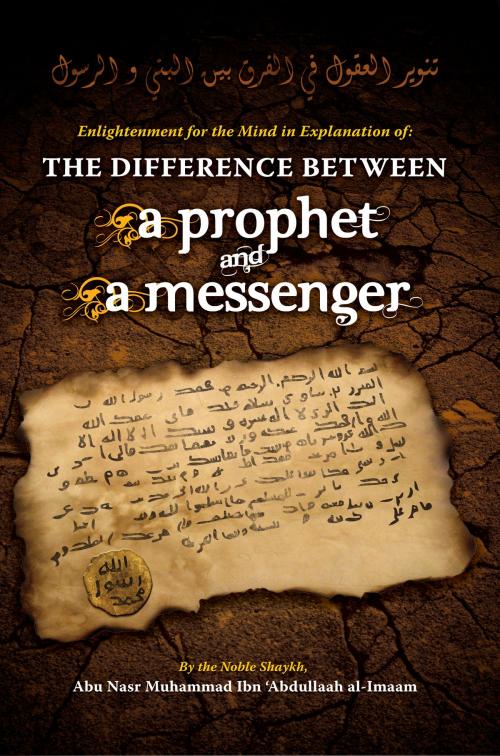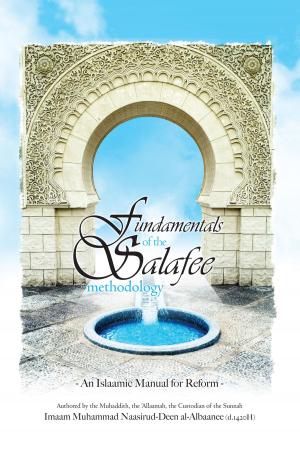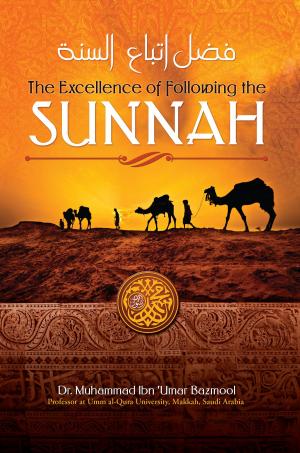The Difference Between a Prophet and a Messenger
Nonfiction, Religion & Spirituality, Middle East Religions, Islam| Author: | Abu Nasr Muhammad Ibn 'Abdullaah al-Imaam | ISBN: | 9781927012086 |
| Publisher: | TROID | Publication: | December 1, 2010 |
| Imprint: | Language: | English |
| Author: | Abu Nasr Muhammad Ibn 'Abdullaah al-Imaam |
| ISBN: | 9781927012086 |
| Publisher: | TROID |
| Publication: | December 1, 2010 |
| Imprint: | |
| Language: | English |
From the pillars of the Islaam is the belief in the Prophets and Messengers. The book before you explains this belief and educates the reader upon the upright creed of ahlus-sunnah wal-jama'aah without tafreet (neglect) or ifraat (exaggeration). The author lists twelve differences between a Prophet and a Messenger: The First: The Prophet is the one who Allaah Informs The Second: Most of the Messengers were sent to a Disbelieving People The Third: The Messenger is sent with the Language of his People The Fourth: The Messengers continue Conveying the Religion of Allaah to their people up until they embrace Islaam or Allaah destroys them The Fifth: The Messengers’ Legislation was Different in Most Cases The Sixth: The First of the Messengers was Nooh (‘alayhi salaam) The Seventh: The Difference between the Number of Prophets and Messengers The Eighth: The Saving of the Messengers The Ninth: The Messengers were denied by their People The Tenth: There are Specific Rights of the Messengers The Eleventh: The Agreement amongst the Scholars upon One Statement – that Maryam, Aasiyah, Haajar and the Mother of Moosaa – were not Messengers… The Twelfth: The Virtue of the Messengers over the Prophets After establishing these differences and the importance of having a correct understanding of the issue, the author discusses the need for Prophets and Messengers and the Wisdom behind them being sent by Allaah to Mankind. He dispels prevalent misconceptions and errors, including those who claim, "There is no difference between the Prophets and Messengers." He illustrates the correct understanding and status of the awliyaa and concludes by addressing and refuting the horrible errors and gross exaggeration of some of the deviated sects. A comprehensive read on a matter that is widely misunderstood.
From the pillars of the Islaam is the belief in the Prophets and Messengers. The book before you explains this belief and educates the reader upon the upright creed of ahlus-sunnah wal-jama'aah without tafreet (neglect) or ifraat (exaggeration). The author lists twelve differences between a Prophet and a Messenger: The First: The Prophet is the one who Allaah Informs The Second: Most of the Messengers were sent to a Disbelieving People The Third: The Messenger is sent with the Language of his People The Fourth: The Messengers continue Conveying the Religion of Allaah to their people up until they embrace Islaam or Allaah destroys them The Fifth: The Messengers’ Legislation was Different in Most Cases The Sixth: The First of the Messengers was Nooh (‘alayhi salaam) The Seventh: The Difference between the Number of Prophets and Messengers The Eighth: The Saving of the Messengers The Ninth: The Messengers were denied by their People The Tenth: There are Specific Rights of the Messengers The Eleventh: The Agreement amongst the Scholars upon One Statement – that Maryam, Aasiyah, Haajar and the Mother of Moosaa – were not Messengers… The Twelfth: The Virtue of the Messengers over the Prophets After establishing these differences and the importance of having a correct understanding of the issue, the author discusses the need for Prophets and Messengers and the Wisdom behind them being sent by Allaah to Mankind. He dispels prevalent misconceptions and errors, including those who claim, "There is no difference between the Prophets and Messengers." He illustrates the correct understanding and status of the awliyaa and concludes by addressing and refuting the horrible errors and gross exaggeration of some of the deviated sects. A comprehensive read on a matter that is widely misunderstood.















